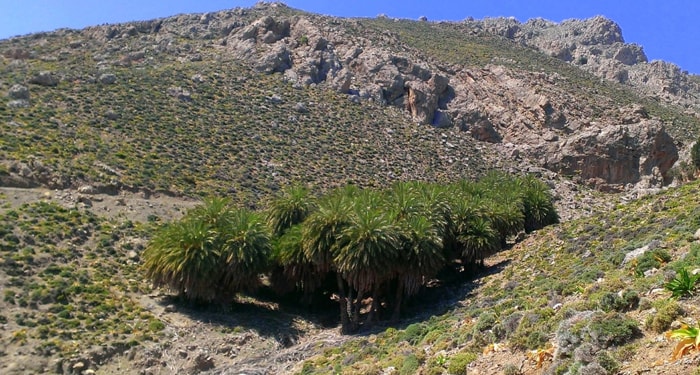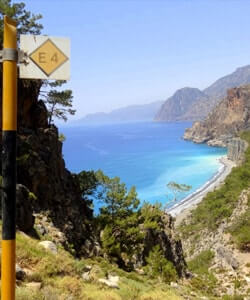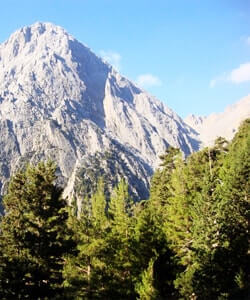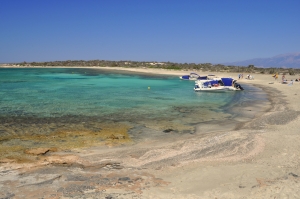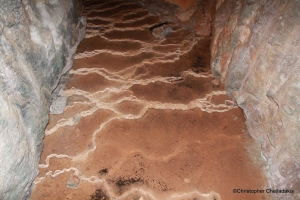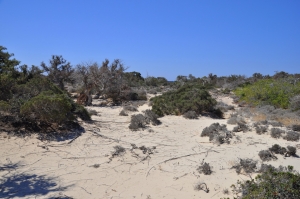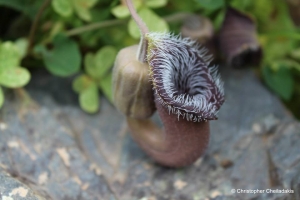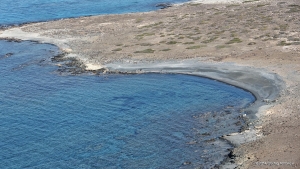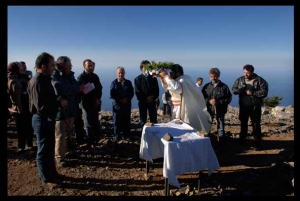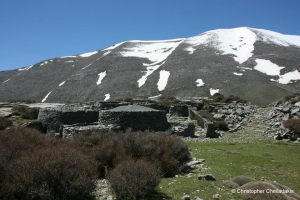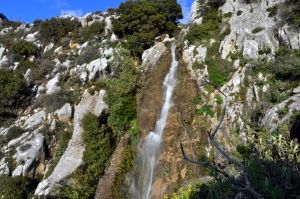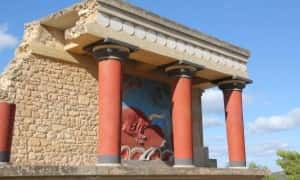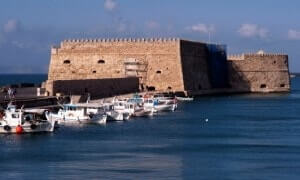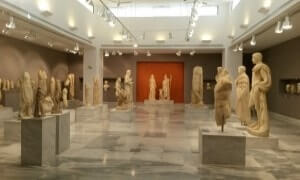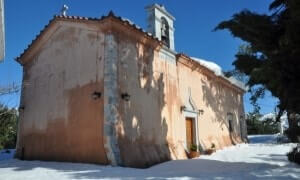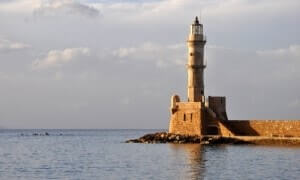At the eastern part of the island of Chryssi and on the south side of the island the large beach of Vages is formed. Vages generally has a rocky bottom, except for the eastern edge where there is sand.
Opposite the perennial plane tree in Keramota we meet the cave of Vrissi (Fountain) of Keramota. This cave despite the relatively small depth is really amazing. From the cavern end comes out water throughout the year and is stored in the village's fountain a few meters away. Several years ago the cave of the fountain was a very small hole from where the water came out. But from this tiny hole one could see the greatest width of the interior. Thus, the inhabitants of Keramota decided to break the rock and reach deep into the cave to the original spring of the water.
The dunes of the central narrowest part of the island of Chryssi, we meet one of the most important juniper wood (sp. Juniperus macrocarpa) in Greece, which has prevailed (erroneously) with the name cedarwood. In other parts of the island, such as west and east, we encounter vegetation with Juniperus phoenicea being the main plant.
One of the most impressive spring plants of Crete is Aristolocheia (Aristolochia cretica). It is a perennial plant that creeps on the ground and has flowers that are truly impressive and have a shape resembling a saxophone or boot. This plant is typically found on dry rocky soils of Crete and Carpathos. In Crete it is found all over the island, but especially in Lassithi prefecture (east Crete).
At the western end of the island of Chrissi, the small Cape Kendra is formed and right next to we meet the southernmost beach of the island. There is no high vegetation for shade, while the bottom, as in the whole island, is mainly rocky. You can combine your visit to the lighthouse and Agios Nikolaos with a walk to Kendra.
Atop the highest peak of Asterousia, Kofinas, stands the church of the Holy Cross and is accessed through a steep trail. On the Feast of Holy Cross, on September 14, dozens of people climb up there to participate in a ritual that has its roots in the Minoan times, when nature and trees were worshiped.
Vathy Lakki was used only during the summer months because it is located at an altitude of over 1600 meters and in winter the whole area is covered by snow. The architecture of mitato houses at Vathy Lakki brings to mind the Minoan domed tombs and no binding material was used for building the walls.
Southeast of the village Partheni and near Epanosifis Monastery, emerges a wild stone massif. In the middle of the rock, several waterfalls are formed during the rainy season, which are completely unknown even to locals. The place can be reached through a dirt road that reaches the base of the lower waterfall.






